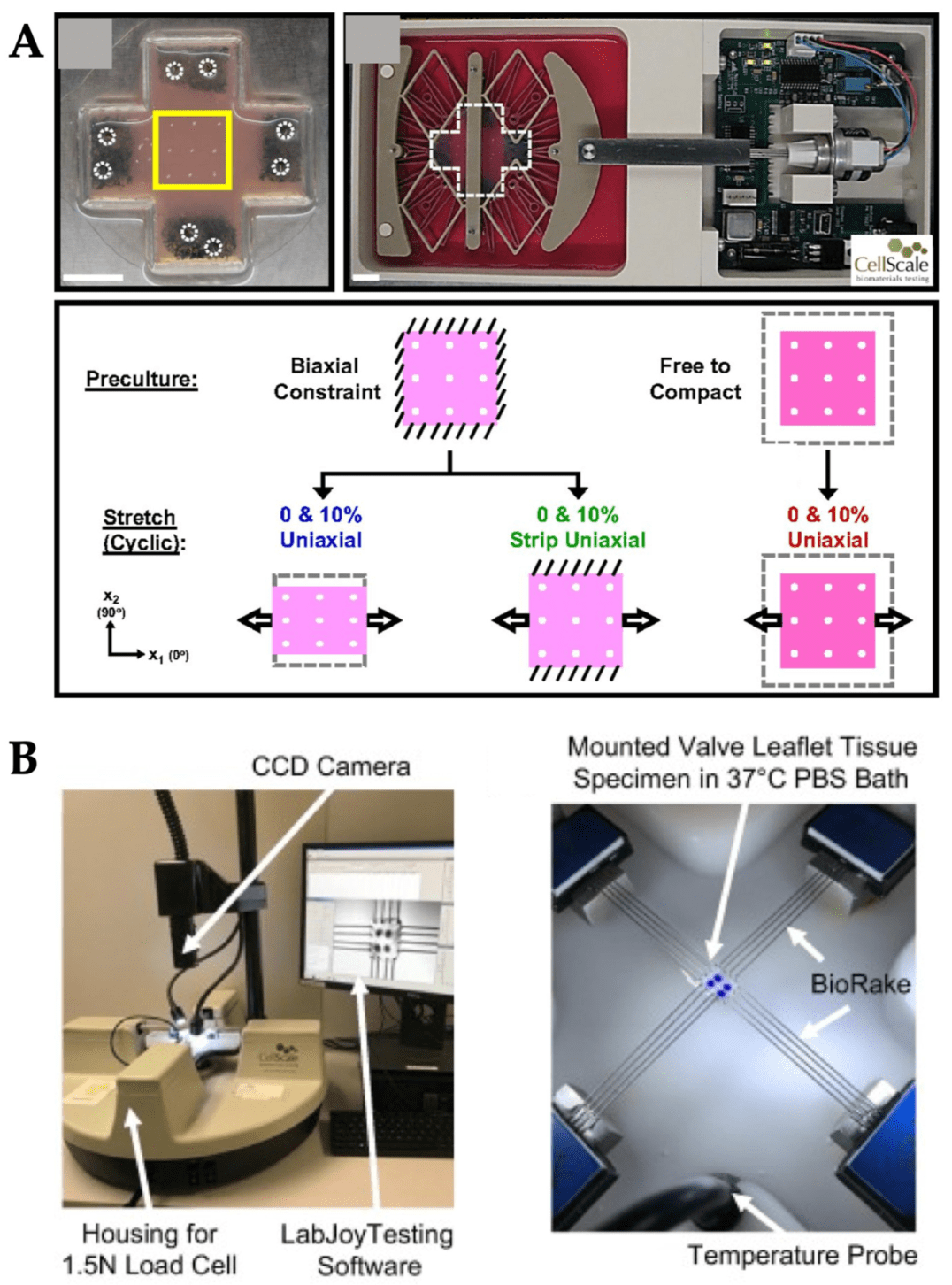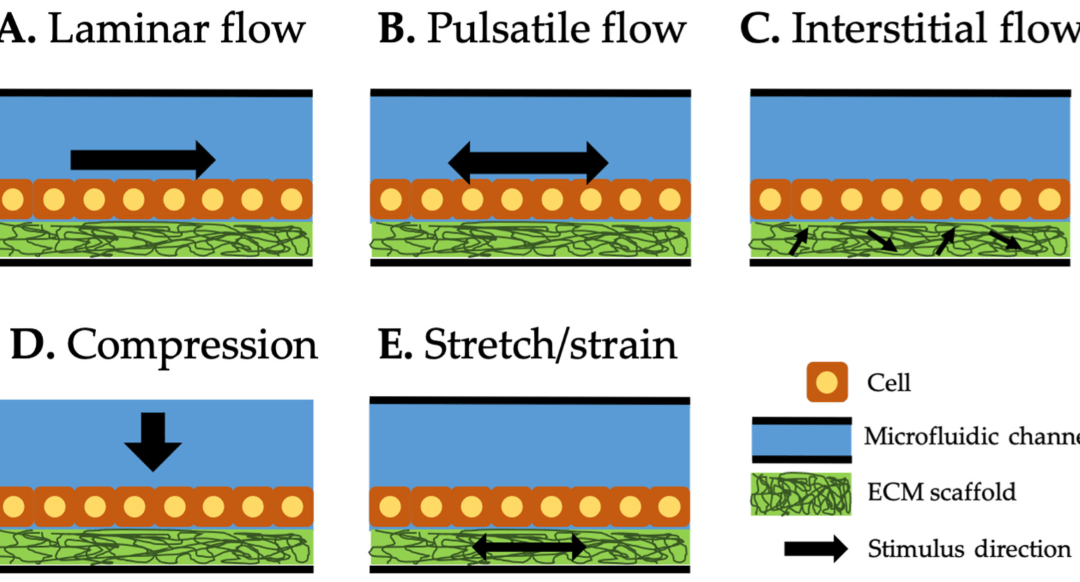Dr. Jeong-Yeol Yoon and Ph.D. student Kattika Kaarj from the University of Arizona presents this paper on various methods of delivering mechanical stimuli to Organ-on-a-Chip (OOC) devices. OOC as a field have recently gained a huge interest in research and pharmaceutical industries for their ability to recapitulate critical physiological features on human cells and tissues. This paper focuses on one of those features – mechanical force, and the 3 categories of mechanical stimuli that are commonly applied in OOC systems: shear flow (further categorized into laminar, pulsatile and interstitial flow), compression and stretch/strain.
Each type of mechanical stimuli is described in the paper with references to available commercial equipment or research prototype and publications. Dr. Yoon and Ms. Kaarj give detailed explanation on where the mechanical stimuli is found in the body, how OOCs try to accomplish the stimuli and how they have impacted cell and tissue research.
Under the category of Stretch/Strain, CellScale is honored to have 3 of its equipments mentioned. The MechanoCulture B1 generated cyclic uniaxial stretch on 2D and 3D fibroblast cell culture; the BioTester biaxially stretched porcine atrioventricular heart valve leaflets according to various loading ratios and stress-relaxation protocols; and the MCT6 performed cyclic radial strain of mitral valve anterior leaflets at 1Hz frequency.

To read the full journal article, click here: https://doi.org/10.3390/mi10100700
To find out more about Dr. Yoon’s research, click here: http://biosensors.abe.arizona.edu/
To read about different constitutive laws on Fluid-Structure Interaction Simulation of the Mitral Valve, click here.








